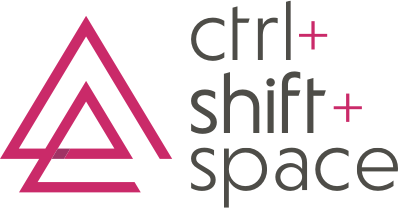This guest column originally appeared in the Portland Business Journal (May 2018).
Photo: Sally Painter Photography
Designing a 'human-centric' work environment is about
more than aesthetics.
Human-centered employers understand that behind every great company, product, service and tool are great employees. Therefore, they work toward keeping their most valuable assets — their people — motivated, engaged and happy. While the environments in which we work are just one piece of the workplace culture conundrum, they represent a pretty large piece of the puzzle.
When done thoughtfully, human-centric work environments are so much more than aesthetics. Not only are they meant to support and maximize unique workstyles and preferences, successfully designed offices draw connections to the company’s brand, vision and mission. Yet this isn’t something that can be accomplished overnight. Diligence, research and determination is required by management, stakeholders and employees who must also be willing to go through a journey of exploration and discovery.
When you’re about to embark on a change like an expansion, office move or remodel, don’t jump in headfirst. Instead, consider it an opportunity to align your company with a human-centered approach. Here are a few things you can examine:
Daily workflow
Ask your employees what their typical workflow looks like, and also observe it yourself. Without a keen understanding of what a day-in-the-life looks like for the team, your workplace will fall short. Do they need non-distracting work zones? Do they like to have stand-up meetings? Do they want to respond to email in a place where they can see and be seen by others? Do they need to attend regularly-scheduled strategic planning sessions? Most workers require a mixture of all of this. Meeting these needs is so much more than furniture, equipment, and conference rooms.
Personality inventory
Varying types of personalities require varying workplaces. Do you have an abundance of introverts or extroverts? They each need different types of spaces. For instance, open plan offices were being designed everywhere in response to our culture’s extrovert idolization. But the pendulum swung too far to the one extreme and now an open plan rebellion is underway. Inspiring work environments can still be hip and cool — meeting the needs of all personalities — without openly displaying every office happening, while being mindful of the audience being served.
Perceived choice
I’m not suggesting you build a full-fledged campus to meet every workflow intricacy and Myers Briggs reading. Just remember that human beings like options, no matter how good the apparent choices may be. Perceived choice is better than no choice at all. Peppering in a mix of quiet spaces, like libraries, with more dynamic spaces for higher energy activities, offer key setting choices for employees to select from. Show people you value them and their uniqueness by providing options for how and where to do their work.
Act now
If you don’t have any location-based changes on the horizon but still want to make a positive impact, here’s what you can do right now to begin putting humans first:
Provide the ability to change positions and bring physical movement into the day. Going on a walking meeting is the first and most important thing you should do right now, and it doesn’t cost a dime, just a good pair of shoes.
Provide access to clean water and fresh air. You might think that this doesn’t apply to traditional offices, however placing water stations near employee hub areas is a positive change you can make now. Adding air purifiers in key locations is another simple fix to abate offensive smells, remove irritants and freshen the air in general.
Role model the behaviors you want to see in your employees. If you want them to have better work life balance, show them how you accomplish that goal. Actions speak louder than words.
If all you are seeing is dollar signs, don’t worry. While there is something to be said for the reason uber-successful companies like Google heavily invest in their workplaces, I am not suggesting you make drastic changes nor spend piles of money unless you’ve got a good reason to do so. In fact, it likely isn’t the actual space that you need to think about now, but rather your people and what improvements can be made for their sake. Engage in some due diligence workplace assessments, and then prepare a strong action and transition plan to handle foreseeable changes affecting your space. This way, you’ll more gracefully (and successfully!) manage through transitions while keeping No. 1 — your employees — top of mind in the face of a new way of working.


